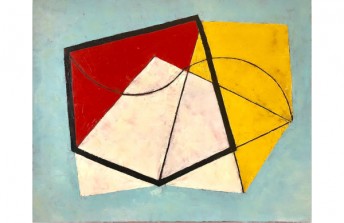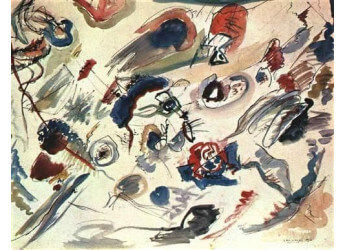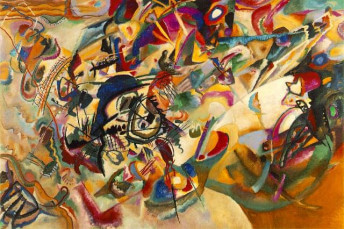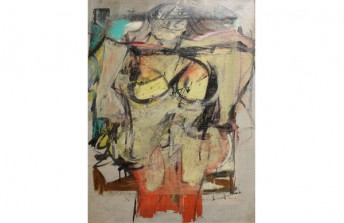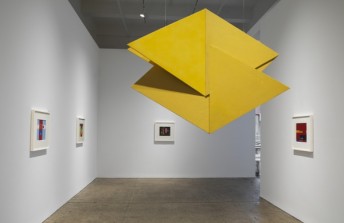Owning the Greatness - Pierre Soulages
Dec 23, 2016
Back in 2014, French President Francois Hollande traveled to a town called Rodez, in the south of France, to preside over the opening of the Musée Soulages, a new museum dedicated to the work of French painter Pierre Soulages. Over the course of the museum inauguration, President Hollande declared Soulages “the greatest living artist” in the world. The declaration immediately sparked controversy. It became a talking point for innumerable articles, blog posts, panel discussions, academic discussions and personal arguments. Even now, years later, it continues to spark revivals of age-old debates in the art world, such as whether aesthetics can be judged objectively, and whether greatness is even possible to describe in art. Meanwhile, Pierre Soulages never asked for this kind of attention. But what is an artist to do when swept up in such a whirlwind? Since that fateful day in 2014, Soulages has done exactly what he had been doing for more than half a century before: he has continued to paint.
Francois Hollande vs. Art
One criticism heaped upon President Hollande when he made his public judgment about Pierre Soulages is that greatness in an artist cannot be objectively judged. Of course, there was a time when academicians widely believed that it was possible to judge art objectively. In the Mid-16th Century, the Academie des Beaux-Arts had strict guidelines describing what made a work of art worthy of praise. And the idea of aesthetic criticism and judgment remains a favorite subject of philosophers even today. But since the end of the 19th Century, it has generally been acknowledged by most artists that greatness in art is subjective.
The other criticism people have made of President Hollande is that even if it is possible to judge artistic greatness, he is not a qualified judge. He was not an art student or an artist himself. He is not known for collecting art. And although it is impossible to know for sure, it is unlikely that he possesses even the smallest amount of knowledge about the hundreds of thousands of other living artists in the world besides Pierre Soulages. So even if we could hypothetically acknowledge that it might be possible to objectively judge greatness in an artist, it seems Hollande would be one of the least qualified judges available.
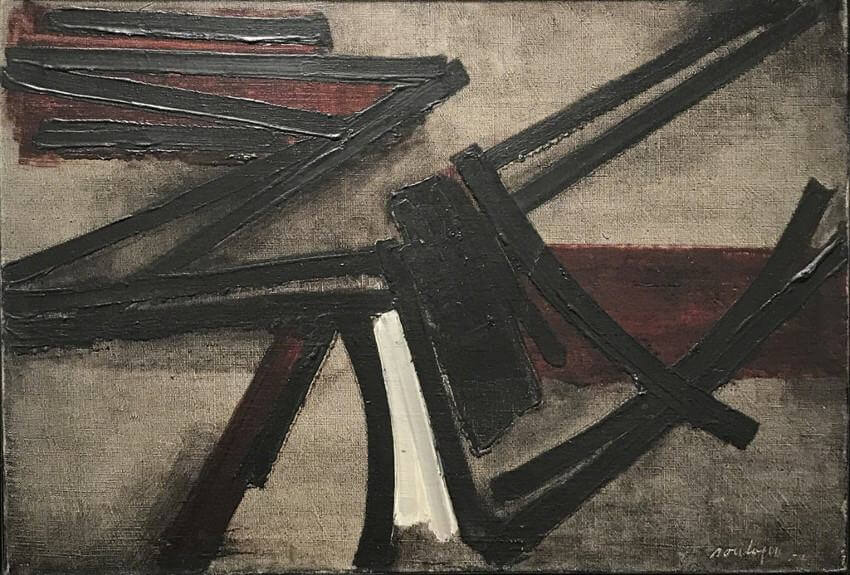 Pierre Soulages - Peinture, 19 Novembre 1951, 1951. Oil on canvas. 38.1 x 54.9 cm. © Pierre Soulages
Pierre Soulages - Peinture, 19 Novembre 1951, 1951. Oil on canvas. 38.1 x 54.9 cm. © Pierre Soulages
The Value of Taste
Despite his lack of credentials, the controversial thing about the declaration Hollande made about Soulages is not that he was so bold as to express an ignorant, hyperbolic opinion. We have all deemed someone the greatest this or the greatest that at some point in our lives. The audacious thing was not his declaration, but rather that he made it while serving as the President of France. No one is upset about his opinion. They are upset about his influence.
But nonetheless, Francois Hollande has taste. We all do. Taste is the special quality that allows someone to make a subjective judgment about art. Personal taste is precisely that: personal. So even if we demand that it is not possible to determine greatness in art, and that it is therefore impossible for any living artist to be the greatest living artist, we must still acknowledge that everyone, even a politician, is at least entitled to a personal declaration of taste.
 Pierre Soulages - Peinture, 25 fevrier 1955, 1955. Oil on canvas. 100 x 73 cm. © Pierre Soulages (Left) / Pierre Soulages - Peinture, 5 mai 1959, 1959. Oil on canvas. 130 x 97 cm. © Pierre Soulages (Right)
Pierre Soulages - Peinture, 25 fevrier 1955, 1955. Oil on canvas. 100 x 73 cm. © Pierre Soulages (Left) / Pierre Soulages - Peinture, 5 mai 1959, 1959. Oil on canvas. 130 x 97 cm. © Pierre Soulages (Right)
Beyond Black
Setting the concept of greatness aside for a moment, Soulages is undeniably a visionary. And he has always managed to remain true to his vision. At age 60, in the midst of an already prestigious career, he radically evolved his relationship to painting. He had always used black to define his gestural, calligraphic paintings. But he had also included other colors, using color relationships and forms to define his compositions. Then one day in 1979, after painting what he thought was an unsuccessful all-black painting in his studio, Soulages took a nap, thinking he would burn the painting later in the garden, as he had done with many other unsuccessful canvases.
But after being away from the painting for a couple of hours, he returned to it and noticed not the black paint, but the way the light reflected off the textures. He realized then that he was not a painter of black, but a painter of light. Since that moment, black has been the only color he uses. He carves, scrapes and pushes brushes deeply into the paint in order to create textures that will result in luminous compositions. He calls his style Outre Noir, or Beyond Black, a reference to his idea that to perceive his works one must look beyond the color of the paint. His Outre Noir paintings are distinct and immediately recognizable and even cause some viewers to be overcome with emotion, or brought to tears.
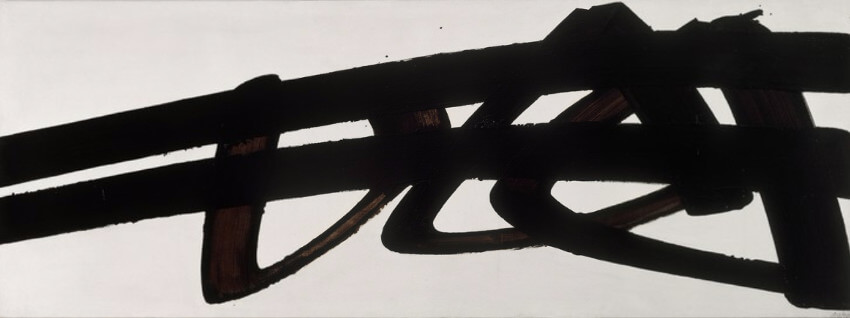 Pierre Soulages - 12, January 1974. Acrylic on canvas. 150 x 350 cm. © Pierre Soulages
Pierre Soulages - 12, January 1974. Acrylic on canvas. 150 x 350 cm. © Pierre Soulages
An Earned Reputation
Aside from aesthetics, Soulages also possesses many qualities that tend to determine greatness in life in general. He approaches his work with sincerity and passion. He works every day. He shares only what work lives up to his own strict standards. And he has been driven to succeed in the same field ever since he was a child admiring cave drawings and monolithic, prehistoric carved stones around the countryside where he was born.
He has also taken tremendous measures throughout his life to network to put his work in front of the public. In the decade after World War II, Soulages earned fame in the United States through his carefully nurtured relationship with New York gallerist Samuel Kootz. That led to Soulages being collected by the biggest museums in the US, and to his friendships with Mark Rothko, Willem de Kooning and many of the other brightest stars of the art world.
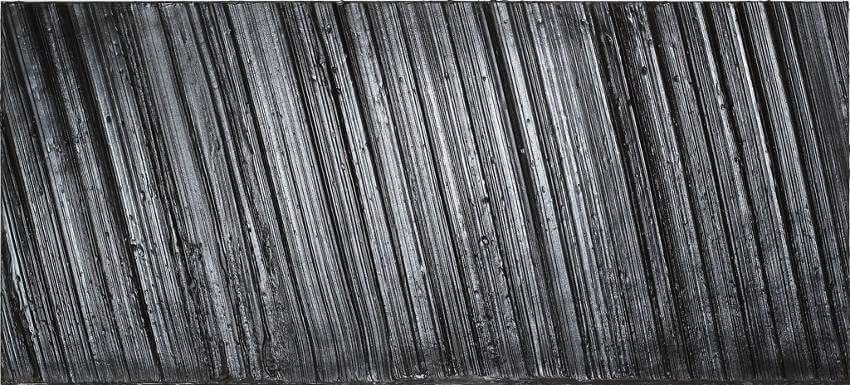 Pierre Soulages - Peinture, 26.5 x 59 cm, 35 Mai 1997, 1997. Acrylic on canvas. 26.5 x 59 cm. © Pierre Soulages
Pierre Soulages - Peinture, 26.5 x 59 cm, 35 Mai 1997, 1997. Acrylic on canvas. 26.5 x 59 cm. © Pierre Soulages
Owning the Greatness
Soulages is also one of the most professionally accomplished living artists in France, if not the world. His works regularly sell for €4 million or more, making him possibly the wealthiest living French painter. And he is also perhaps the most generous, having donated nearly a thousand paintings to various museums and institutions. His recent retrospective at the Georges Pompidou Center in Paris, which was the largest exhibition the museum has ever staged, pulled in more than half a million visitors. And since his 2001 exhibition at the State Hermitage Museum in Saint Petersburg, Russia, one of the oldest museums in the world, Soulages remains the only living artist to have ever been shown there.
Regardless of our opinions about Francois Hollande, and despite our many caveats about whether greatness in art is something that can be objectively determined, the fact remains that Pierre Soulages is at the very least important. He is much discussed, much celebrated, widely collected, and highly effective in his ability to connect with viewers. In an interview with Interview Magazine in 2014, Soulages said, “Painting isn't just pretty or pleasant; it is something that helps you to stand alone and face yourself.” Since being called the greatest living artist, when he faces himself what does he see? Hopefully, he sees the same thing I see: a sincere artist; someone to whom greatness is beside the point; a painter who simply loves to paint, and hopes only to be able to continue with his work.
Featured image: Pierre Soulages - Peinture 45 x 69,5 cm, 5 Septembre 2013, 2013. Oil on canvas laid on panel. 45 x 69,5 cm. © Pierre Soulages
All images used for illustrative purposes only
By Phillip Barcio

